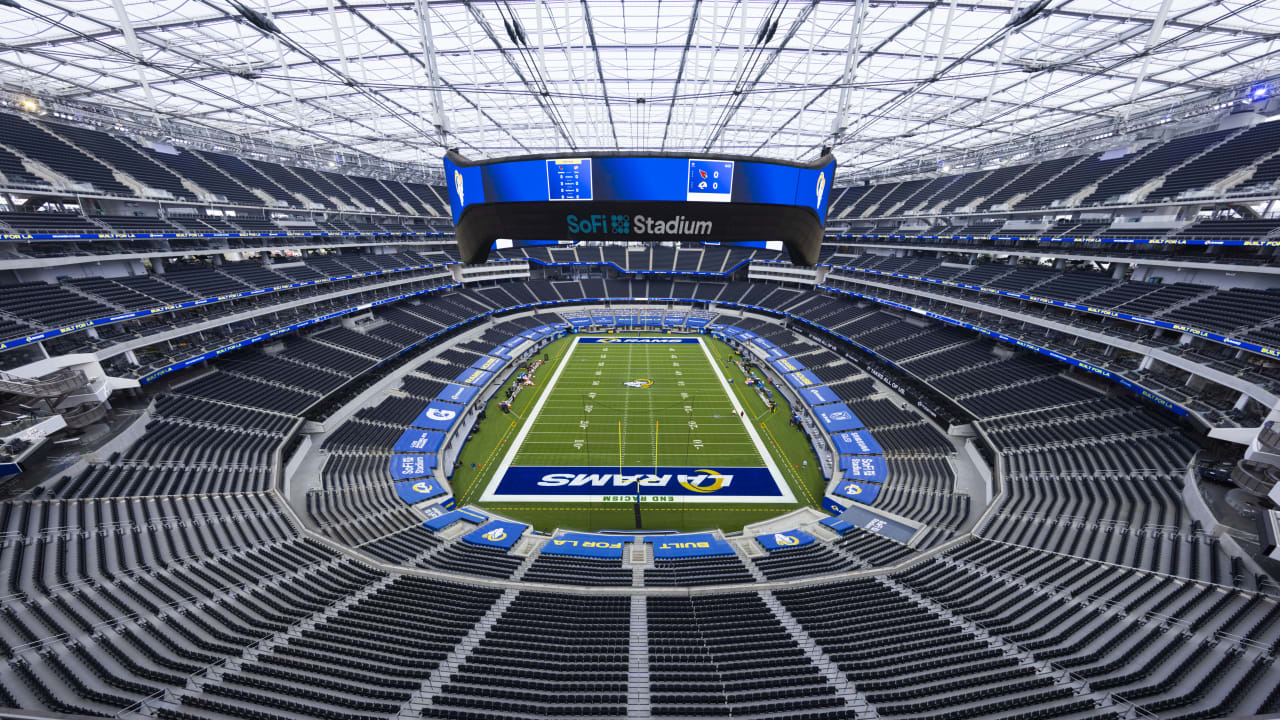Super bowl LVI stadium in los angeles: When the la Rams and Cincinnati Bengals face off this month for Super Bowl LVI, they’ll get it done around the Rams? home turf: the brand new SoFi Stadium in Inglewood, California. The Nation’s Football League’s newest and largest venue, SoFi Stadium was created by HKS Architects together with Studio-MLA, a Los Angeles-based landscape architecture firm brought by Mia Lehrer.
Set within a distinctively swooping roof canopy, the 70,000-plus-seat stadium supplies a bigger-scale version much bigger scale of what Southern Californian architecture does best: indoor-outside living. Based on 37 colossal posts, the rooftop provides defense against the rain, speculate it doesn’t touch the stadium’s walls, her advantages of a wide open-air space. As Mia Lehrer remarks inside a conversation with AD, ?there are incredible breezes in the sea that undertake the stadium.

Finding sites for brand new Super bowl LVI stadium in los angeles could be a complex proposition, designed for dense urban environments like La. Using the closure from the Hollywood Park Race track, though, this type of site availed itself towards the team owner, Stan Kroenke. Although the parcel included the top area required for a significant stadium, there is a catch: its closeness to Poor. To obtain the volume required for sufficient seating, the stadium would run afoul of height limitations enforced through the Federal Aviation Administration. So HKS, Studio-MLA, as well as their group of engineers transported out a cutting-edge compromise: embedding the stadium 80 ft into the ground.
To deal with this significant grade change, Lehrer produced landscaped walkways that terrace lower towards the stadium entrances. Grown with plant life in the Mediterranean biome, the landscape doubles as a type of botanical garden. Her design also does some heavy-lifting with ecological performance, having a 6-acre lake recording stormwater runoff you can use to irrigate the development’s grown areas. Kush Parekh, an affiliate principal with Studio-MLA and also the project team lead, estimates the process will reclaim 26 million gallons of water every year.
The landscaping allows residents year-round accessibility areas outdoors the stadium itself, presenting new shared spaces inside a city that lacks equitable use of public space. ?This is really a place to go for the city, states Lehrer. It’s not only a spot to visit a football game in order to shop it’s an atmosphere that people come and become with the community.?
Lehrer found this project having a string of notable local stadium experience, getting designed the landscapes for Dodger Stadium (the legendary place to find the la Dodgers) and also the Banc of California Stadium (where the la Soccer Club, the city’s Major League Team, relies on).
The SoFi Stadium is really a situation-in-point for demonstrating the need for including landscape architecture as a fundamental element of stadium designs. For many years, metropolitan areas over the U.S. committed to stadiums occur vast tracts of surface-level parking, creating single-use districts excessively congested a couple of weekends annually but otherwise barren. With SoFi Stadium, though, the venue is certainly one component of a bigger 300-acre mixed-use redevelopment plan, Hollywood Park, which will ultimately include as much as 5 million square ft of recent structures for offices, retail, hotel, and housing, with Studio-MLA’s landscaping making these disparate elements cohere. As Lehrer puts it, ?this is really a new group of spaces that individuals can come to whether they’re seeing a football game or otherwise.?
